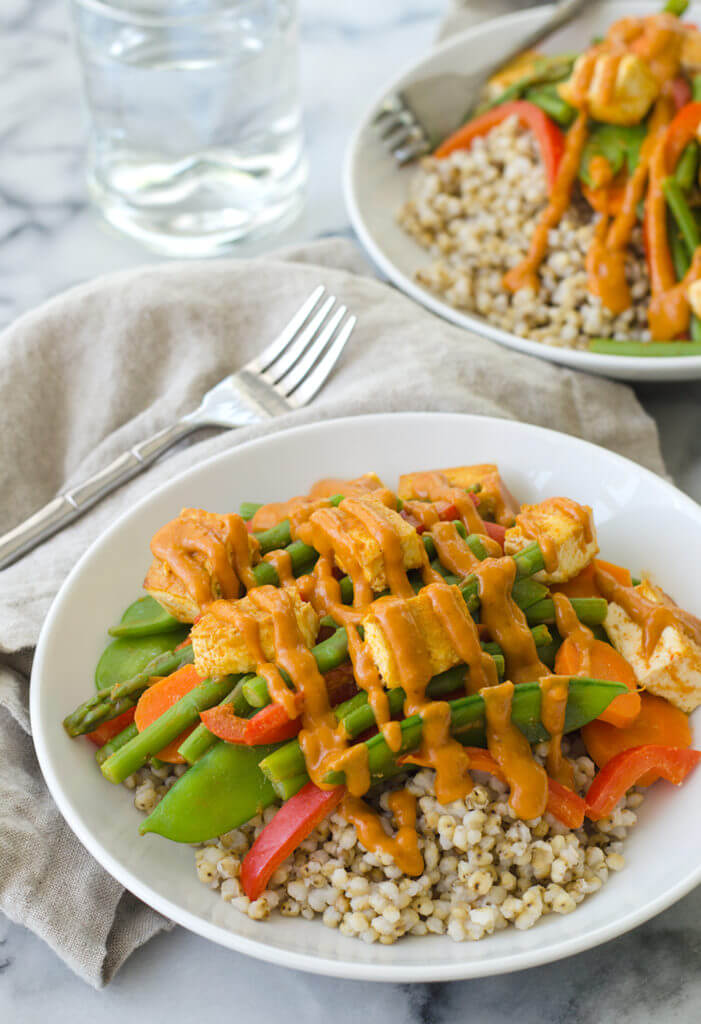Take a 2-Week Vegetarian Challenge

As a new year begins, and you consider making resolutions for health, it’s a great time to ponder the environmental and health benefits of eating a plant-based diet. After all, vegetarians have a lower rate of coronary heart disease, hypertension, diabetes, colorectal cancer and obesity, according to research. In addition, vegetarians (including vegans) have a 30% lower carbon footprint, compared to non-vegetarians. And that’s not even counting the impact you can make on other environmental issues by eating fewer animal foods, like less water usage, deforestation, and manure production. Whew! With so many reasons to eat more plants and fewer animals for your health and the health of the planet, it’s a perfect time to try a veggie challenge this month—even if it’s just for 2 weeks! What have you got to lose (besides a few pounds)?
In order to plunge in to your vegetarian challenge, follow my 6-step plan.
6 Steps for Taking a Vegetarian Challenge
1. Get Prepared. Don’t just wake up on Monday morning and go vegetarian “cold turkey”, so to speak. You’ll need to do a little planning. First of all, make sure you are mentally prepared by informing your friends and family, so they can support you. Then, you’ll want to make sure you stock your pantry with delicious, plant-based foods, and maybe even write out a menu for your week of plant-based meals.

2. Shop Right. Stock your pantry and frig with the following ingredients, because they are the foundation of a healthy vegetarian diet. While your best off eating whole, minimally processed plant foods, it doesn’t hurt to buy a few prepared foods, such as veggie-burgers and faux meats, to help you kick start your challenge.
- Pulses: Dried and canned beans, lentils and dried peas
- Whole grains: Such as oats, farro, quinoa, brown rice, sorghum, millet, spelt; whole grain breads, pasta and cereal
- Nuts, seeds: Peanuts, pistachios, almonds, walnuts, almonds, sunflower seeds, hemp seeds, flax seeds, chia seeds, pumpkin seeds (as well as butters)
- Seasonal produce: Fruits, vegetables, greens, and more; including canned and frozen versions of produce out of season
- Plant proteins: Fortified soy milk and yogurt, tofu, tempeh, seitan
- Prepared foods: Veggie-burgers, veggie bacon, faux meat

3. Eat Plants. Once you have the key elements of your plant-based diet in your kitchen, now you can start enjoying them in all their glory!
- Breakfast: Try whole grain porridge with seasonal fruit (or even vegetables) and nuts; whole grain waffles or pancakes with seeds and fruit; or toast with nut butter and fruit
- Lunch: Pack up an entrée salad with beans and veggies or a thermos of veggie chili with whole grain crackers
- Dinner: Enjoy simmered beans and rice with a salad; home-made lentil patties with potatoes and sautéed vegetables; or a tofu vegetable stir fry with whole grains.

4. Snacks: Nibble on hummus with snow peas, a handful of nuts and raisins, or whole fruit
5. Get Cookin’. Now’s your chance to pull out a vegetarian cookbook or visit a wonderful blog to discover plant-based cuisine at it’s best. Budget a little extra time in your schedule to try a few new recipes each week, such as Mofongo or Vegetarian Chili. But remember, plant-based cooking doesn’t have to be complicated. It can be as easy as black bean tacos with assorted vegetables or a whole grain pita sandwich with hummus.

6. Dine Out. Plan to eat out at least a couple of times during your 2-week challenge. You’ll discover a whole world of delicious plant-based options in eateries! Most restaurants have at least one vegetarian item on the menu, and chefs have fallen in love with plants in recent years. Try ethnic eateries for flavorful choices, such as Indian, Vietnamese, and Ethiopian fare. Check out the menu of restaurants before you visit them, so you have your menu options planned.
7. Evaluate Your Success. Once your 2-week challenge is over, ask yourself a few questions. How do I feel now? Was it difficult? Was it fun and delicious? Where do I want to go from here? You may decide that you love how you feel, and you’d like to keep up the momentum. Or you may conclude that you’re not ready to take the all-or-nothing approach, but want to make a serious effort to eat more plants and fewer animals. And in the end, that’s what really matters.
Images: Sharon Palmer, RDN



